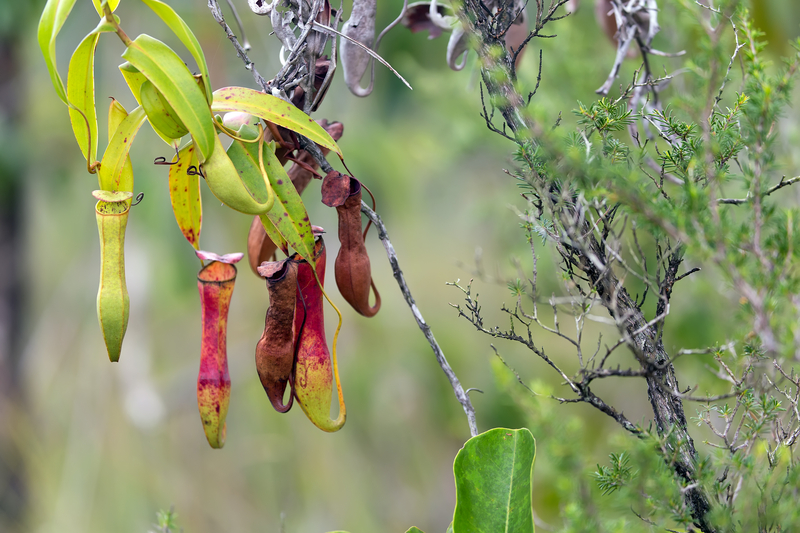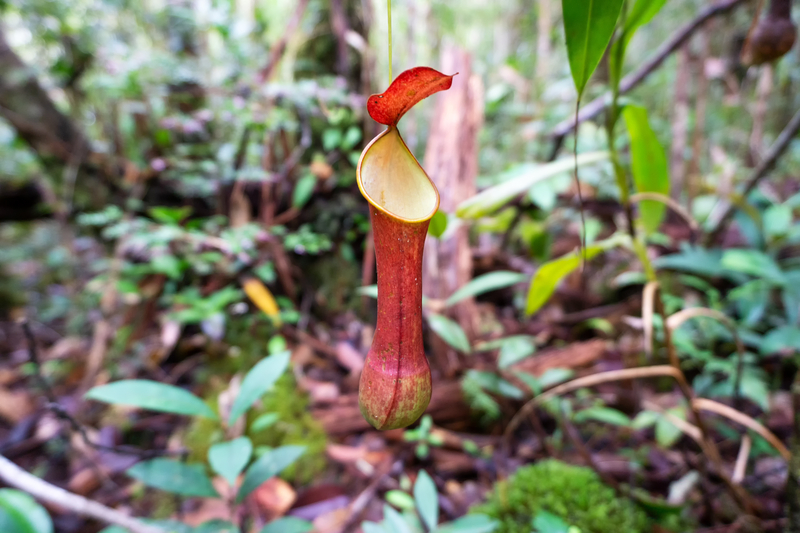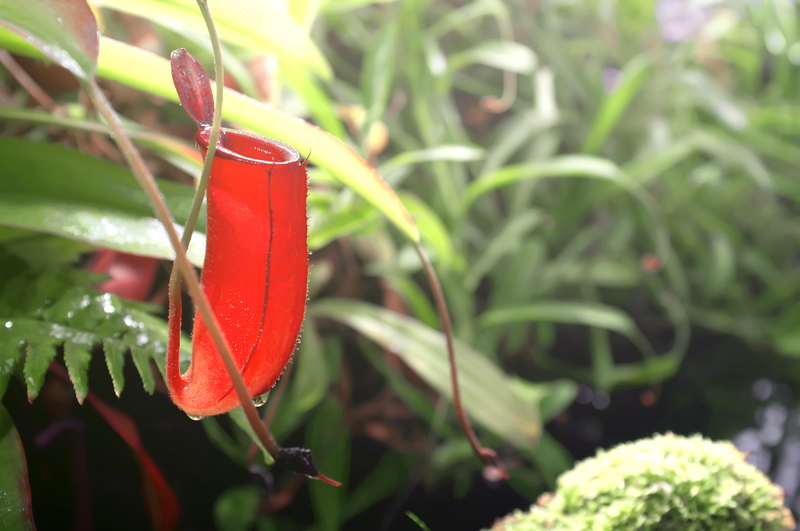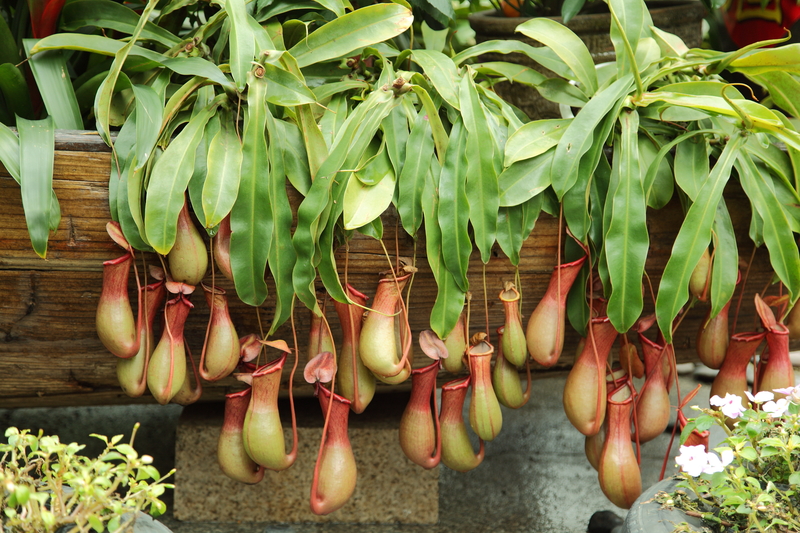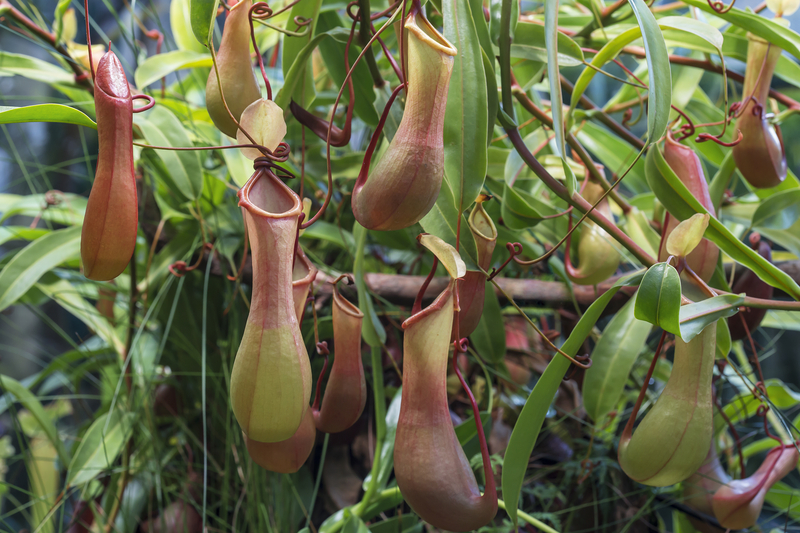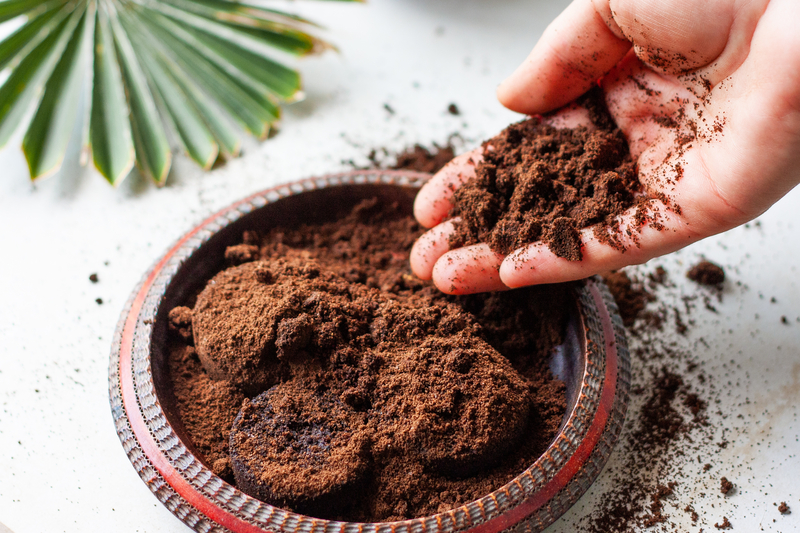Nepenthes are a tropical variety of the Pitcher Plant found primarily in Southeast Asia, Madagascar, and Australia. These fascinating plants are surprisingly adaptable to indoor environments and make for great, quirky houseplants. Here is how to take care of a Nepenthes plant in your garden or home!
Scientific Name
Nepenthes is, in fact, the scientific name of this plant (derived from its higher classification – Nepenthaceae). It is more commonly known as the Tropical Pitcher Plant.
Other Names
- Tropical Pitcher Plant
- Monkey Cups (the name comes from the monkeys in tropical forests occasionally drinking the protein-rich fluid present in them).
- Sun Pitchers
Different Types
Over 170 different Nepenthes plants are identified, with several new species joining the list every year! Some of the most common ones include Nepenthes alata, Nepenthes mirabilis, Nepenthes attenboroughii (named after Sir David Attenborough, and Nepenthes ventricosa.
What Soil Works Best for a Nepenthes Plant?
Nepenthes plants can thrive in many potting/garden mixes as long as they are porous (for adequate drainage). The only catch? These mixes need to be low on nutrients.
Low nutrients are vital because these plants are carnivores whose primary nutrients are small insects and arachnids. A mixture of half-sharp sand/perlite and half-peat moss is ideal. Avoid commercial potting mixes as they tend to be too rich in nutrients and hence, bizarrely harmful for the plant.
How Much Sun Does a Nepenthes Plant Need?
If you’re not sure of the plant variety, it is best to keep the plant under bright but indirect supplemental lighting. If you keep the plant near a window, avoid placing it in direct sunlight. Intense sunlight can be harmful to the plant.
If you see the leaves turning dry yellow or brown (sort of a scorched texture), it is time to move the plant into an area with less direct light. If you don’t have the space to put the plant somewhere else, consider putting a curtain over the window to reduce the direct sun ray’s on the plant.
What Temperature Works Best for Nepenthes Plants?
Indoor Pitcher Plants usually prefer warm temperatures between 65 and 80 F. Highland species like Nepenthes Villosa require cooler nights (around 55-60 F), whereas Lowland species require warmer temperatures reaching up to 95 F. These species are usually easier to grow and thrive between 75-90 F.
Do Nepenthes Plants Enjoy Humidity?
Nepenthes plants usually thrive in conditions with high humidity. They can tolerate low humidity to an extent, but they will wilt away if they’re made to do this too long. Terrariums, Greenhouses, or even tents made from clear plastic bags can help generate ideal humidity levels (around 60%) for your Nepenthes.
Another way to increase the humidity for this plant is to place it in a bathroom that has a shower. A shower running will create extra moisture in the room, which this plant enjoys.
How Often Should You Water a Nepenthes Plant?
Nepenthes plants need watering often. Watering should occur overhead until the soil is moist. Once the plant receives water, make sure the excess water drains out of the pot. While these plants enjoy moist, loamy soils, their roots can rot when there is too much water.
What Size Do Nepenthes Plants Grow to Typically?
Nepenthes plants are the largest known carnivorous plants, with the tall ones (like Attenborough’s Nepenthes) reaching 5 feet in height. Their pitchers are usually 30 cm in diameter and can even engulf small rodents and birds.
Most Common Bugs
Spider mites attach to Nepenthes plants when they’re dry and end up sucking valuable nutrients out of them. Other common pests of the Nepenthes Plant include mealybugs, Aphids, Leafhoppers, and thrips (these usually can’t be spotted, but deformed leaves should be a sign).
Most Common Diseases
Direct fertilization of the Nepenthes Plant can lead to fungal infections in its roots. Waterlogging/overly moist, poorly ventilated soils can do the same. These diseases start as spores that infest the roots and quickly weaken the plant’s vascular system.
How Long Do Nepenthes Plants Tend to Live For?
A Tropical Pitcher plant can live anywhere between 10-20 years if you take the right steps to care for it.
Can you Propagate a Nepenthes Plant?
While growing Nepenthes plants from seeds is effective and leads to healthy growth, new plants can take up to 2 years to fully mature and flower.
A much better way of propagating Nepenthes Plants is through grafting. Grafting is a technique where a stem is taken from an existing plant and potted separately.
Can you Repot a Nepenthes Plant?
Once weeds start appearing in your soil, it means that the ground has compacted, and your Nepenthes needs replanting. Replanting is necessary because the ground shows poor moisture retention and ventilation and is more likely to kill your plant.
Nepenthes Plants usually have shallow roots, which makes repotting easy. You can take the top inch or two of the original soil (containing the roots) and put it on top of the new batch of soil. The soil then needs vigorously mixing to maintain uniformity.
Why is my Nepenthes Plant Dropping Leaves?
- Waterlogging
- Overfertilization
- Lack of/Excess sunlight
Waterlogging and over-fertilization cause the plant’s roots to develop fungi, swell up, and ultimately rot. The rot affects the entire vascular network, and the plant sheds pitchers.
Another reason for the plant leaves dropping is the light conditions. Too little or too harsh sunlight can also cause the plant to dry up and lose pitchers.
Are Coffee Grounds Good for Nepenthes Plants?
No, Nepenthes Plants require nutrient-deficient soil. Being natural carnivores, these plants prefer getting their nutrients from their prey – small insects, rodents, and arachnids. Adding coffee grounds to your Nepenthes Plant will over-fertilize and subsequently harm it.
Conclusion: How to Take Care of a Nepenthes Plant
Nepenthes Plants are fascinating tropical plants that thrive in warm and humid environments. These carnivorous plants do not need fertilization and can sustain a wide range of temperatures. With adequate care and attention, these plants can turn out to be beautiful additions to your home garden!
Similar Posts:
How to Take Care of a Dragon Fruit Plant
How to Take Care of a Dolphin Plant
How to Take Care of a Jasmine Plant

